Psychogeography is a practice that rediscovers the physical city through the moods and atmospheres that act upon the individual.
Perhaps the most prominent characteristic of psychogeography is the activity of walking. The act of walking is an urban affair, and in cities that are increasingly hostile to pedestrians, walking tends to become a subversive act.
The psychogeographer is a “non-scientific researcher” who encounters the urban landscape through aimless drifting, experiencing the effects of geographical settings ignored by city maps, and often documenting these processes using film, photography, script writing, or tape. In this way, the wanderer becomes alert to the metaphors, visual rhymes, coincidences, analogies, and changing moods of the street.
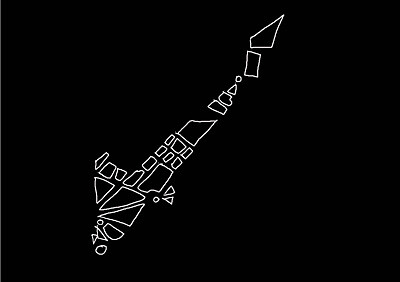

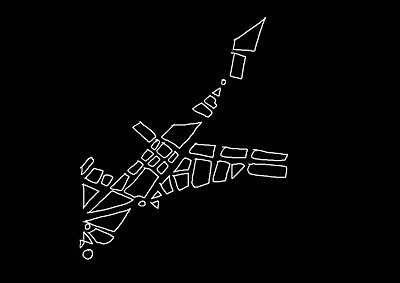

The Cairo Psychogeographical Society was formed in 1989. It is an independent collective of ever changing members. Unlike official scientific or cultural entities, whether governmental or non-governmental, the Cairo Psychogeographical Society is not networked, nor does it communicate with other research centers dealing with architecture, urban planning, or geography at large. Neither is it an organization that receives financial support from development funds, commercial companies, or individuals.
The Society also does not announce its existence publicly by any means.
This extreme isolation is partly due to the criticisms the Society received regularly in conferences as well as in the press.
Critics constantly attack the Society for “a lack of validity due to its inability to produce any scientific discussion or actual discoveries.”
A more severe criticism states that “the so called ‘society’ is a collective of rich, bored, leisurely hobbyists who crave the construction of their own myths — myths that in the end only satisfy the members’ own vanity and ambitions for infamy.”


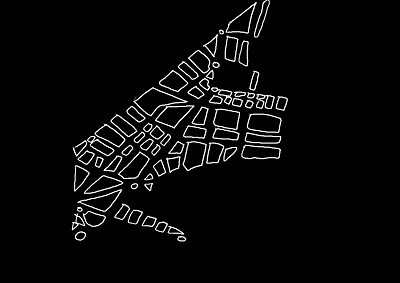

The Society has no headquarters, no address, and no apparent managerial structure.
Its members communicate through e-mail, SMS, and very occasionally meet each other in person. These occasional meetings are called “research actions,” and are used for members to collaborate and perform recorded, preplanned walks in specific areas of the city.
Since 2002, traces of the Society’s activities on the Internet have become increasingly scarce. By 2007, the Cairo Psychogeographical Society blog seemed to suggest there was only one member left.


He uses this alias when the blog is online.
It is difficult to compile and archive “C.P.S.” research actions and material due to the blog’s intermittence online. The information complied here is an edited selection of the research actions, correspondence, personal blog entries, and photographs left online by W in the course of one very active weekend that ran between Wednesday, October 11, 2007 until Saturday, October 14, 2007.


Investigation of lines of “hidden energy” that flow between the public insurance company buildings in Downtown Cairo. The buildings include both government-owned “Misr el Ta’meen” and “Al Shark el Ta’meen” insurance companies.
This action was performed early in the morning, with much less traffic and fewer pedestrians than usual. The psychogeographer began at a random insurance company building, then proceeded to locate others from memory. The action stopped when memory-recollection possibilities were exhausted or when there was a major obstruction to the completion of the action (i.e. intervention from authority, accidents, or other incidents).
Brief notes concerning the personal mood of the geographer were taken, as well as map points and a photograph of each building.
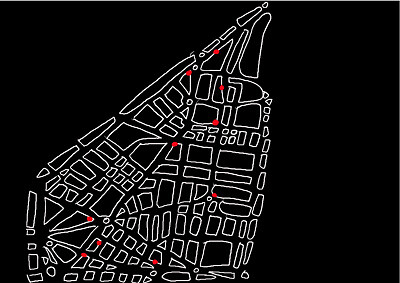

• slight adrenaline rush at the beginning
• marks of weakness on three pedestrian faces
• feeling as if the air is heavy
• gastric activity, but not upset
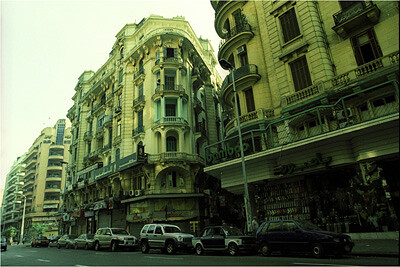

• thoughts of a glass of tea, the temperature of the object felt by the palm, while gripping
• the Army…
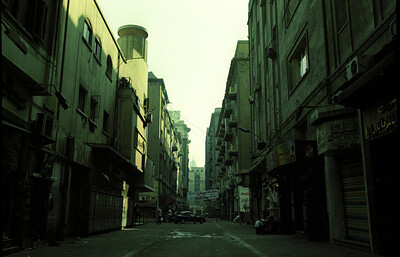

I look at this building because I cannot photograph the one next to it (on its left from this angle).
The one next to it is similar; it is part of the same structure.
I cannot photograph it because it contains the Greek Consulate.


• Two boys from Shabramant
• mini Shampoo packets
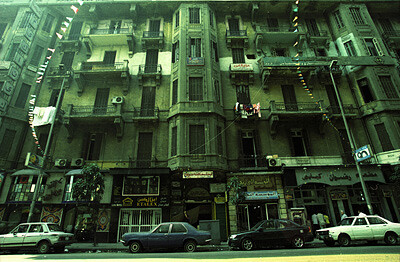

• obstruction
• argument with police officer about photographing
• picture taken after the point made that “everyone has a camera on their mobile phone”
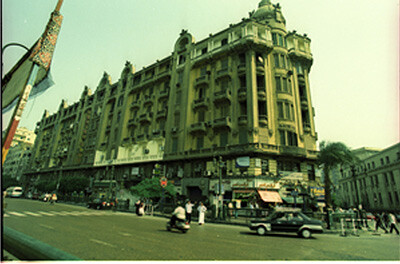

• light exhilaration
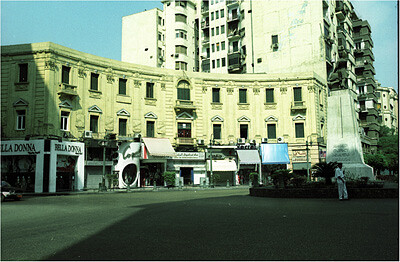

• all the points meet at the center of the square just as Haussmann intended
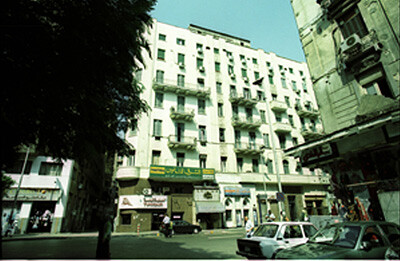

• no congestion
• light thought
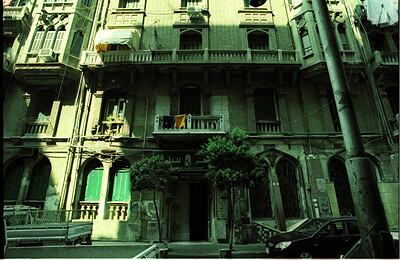

• Saudi Arabia
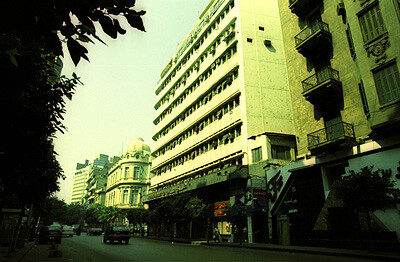



• I can’t go on…
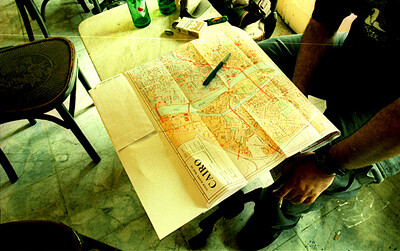

I step outside and look to the east at this building.
I hear the stalker coming from behind me. He asks me what I’m photographing.
“I am photographing it because I like it,” I answer.
“A living museum… Cairo…” he says.
It has a nice ring to it, until I really think about it.
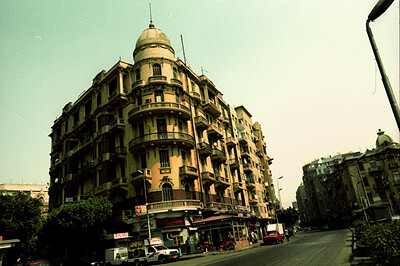

I look down. I feel awkward, although I act otherwise.
I hear him speak. He is talking to me.
“We have a new type of ruling,” he says. “A rule of small groups elevated to positions of absolute power by random pressures, and subject to political and economic factors that leave little room for decisions. They are representatives of abstract forces and have assumed power through a surrendering of the self. They are rulers by accident — inept, frightened pilots at the controls of a vast machine they cannot understand, so they bring in experts to tell them which buttons to press.”
I think of who “they” might be. Perhaps “they” are a non-governmental institute that deals with architecture, art development, or geography.
The stalker is a guide, and the job of the guide is to summarize information that might exist in a certain space and time. Guides also centralize and filter history, not only in an attempt to make the traveler a continuation of it, but to comfort the traveler in some way by making him feel that the center of this megacity is actually a village.
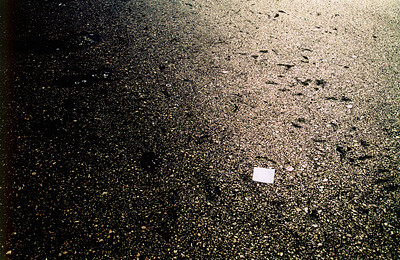

Like all other centers, a mythology surrounds this one, a mythology essential for the gravitation of being. Like all other centers, the “vintage” is fetishized, personal histories are redeveloped, sometimes forged, and illusions of historic continuity are mused on.
The center is an illusion, a spot where wishes come true, so naturally they began to guard it like a treasure; for who knows what wishes a person might have.


“Do you know William Burroughs?”
“I know this building,” I answer. “I took an 8 mm film of it in 1997, and on that day at precisely 11:47 a.m. I crossed the footbridge to Horreya Café.”
Back in the café, the stalker starts to read me lines from a compilation of short stories by Burroughs entitled Interzone.
“A miasma of suspicion and snobbery hangs over the European quarter of Tangiers. The café, by reason of a location, that allows for the best views of people passing through the Socco. Cars are barred from the Socco at 8:00 a.m. and 12:00 midnight. The Socco Chico is the meeting place, the nerve center and the switchboard of Tangiers. Practically everyone in town shows up there once a day at least. Many residents of Tangiers spend most of their waking hours there.”
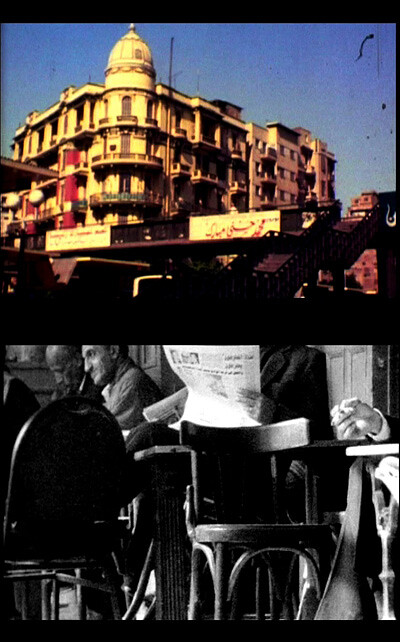

The Cairo ring road encircles the city, provides access to the Giza Plateau, 6 of October City, the Cairo—Alexandria road, Bolak el Dakrour, Imbaba, then across Warak Island to el Marg, Cairo International Airport, the Cairo—Ismailia Road, New Cairo’s satellite cities, then round again to Katameyya, Maadi, Helwan, Mansoureyya, then full circle again to the pyramids.
The map on the right is a route drawn by W. The red lines define the areas where he was hesitant to take photographs from a car driving at approximately 80 km/hr. The gaps are the pictures that were taken. This interpretation of the ring — road map illustrates fear — the fear of being stopped by a person claiming the authority to halt his research action. It is a map that illustrates the fear of being guilty while attempting to create a personal survey of the megacity.
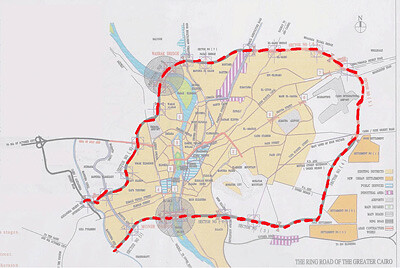

This is a map of the area surrounding the Digla Valley protectorate on the edge of the Maadi suburbs. A member of a group called the “Hash House Harriers” drew it.
The “Hash House Harriers” is an international group of social, non-competitive running and drinking clubs. “Hashing” has frequently been described as “a drinking club with a running problem.” The organization of the HHH is completely decentralized, having absolutely no national offices or leadership structure. W became interested in the group for their mapmaking and topographical skills. Beyond his interest in drawing decent freehand maps to scale, W found the need to make contact with other groups that he mistakenly considered “psychogeographical.” The splintering of the Cairo Psychogeographical Society pushed him to come out of isolation. Unlike Thomas de Quincy’s opium fueled drift around London in the nineteenth century, W felt great loneliness and a desire to belong.
Unfortunately, his lack of social tact in making contact would often push him further into isolation and near depression.
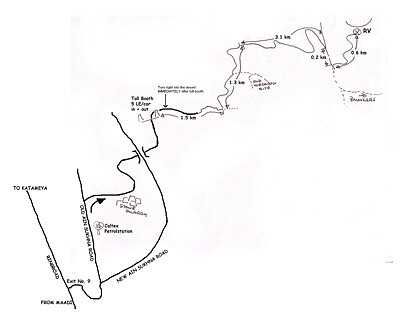

A normal Hash House Harriers run consists of laying trails in the ground (using markers such as grain, flour, or red lentils) for runners to detect and follow. These include false trails, shortcuts, traps, and trail breaks.
The “pack” or “hounds” follow the trail from marked points called “checks.” From these “checks” the “pack” will survey the surrounding terrain in an attempt to find the continuation of the trail.
After the trail has been successfully detected and completed, the “pack” will arrive at its final point, the “Hash Bunker.” This is where members can socialize with one another and drink beer.
The different members assign themselves nicknames such as “Hugeness,” “Bad Lay,” “Erect Runner,” or “I Want Dick.”
Other rituals and activities during the celebration are unannounced and spontaneous.


Dear Sirs,
My name is W and I belong to the Cairo Psychogeographical Society.
I am extremely fascinated by your group’s activities, especially those of navigation, trail-making, and detection. I was wondering if you or your colleagues would care to spare some time for a quick research interview on map-making, trail detection, and topography in general.
Yours sincerely, W
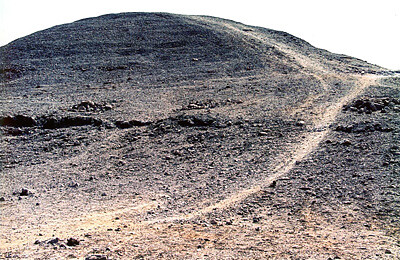

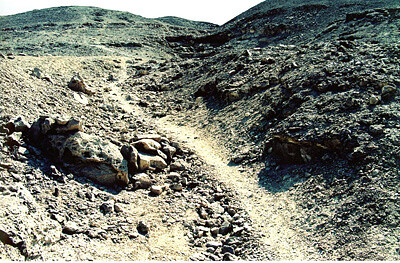

Dear W,
We are not interested in being part of your research.
Good luck on finding other useful subjects for your work.
Yours sincerely, “M.B.” (Director of the HHH)
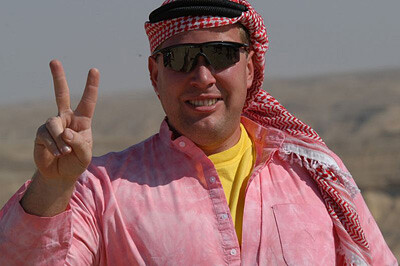

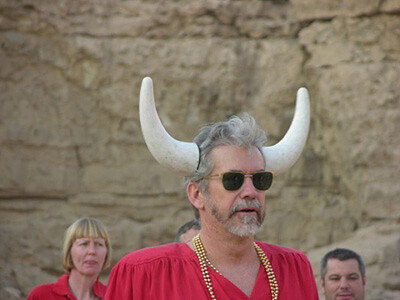

Dear M.B.,
I am afraid that you misunderstood my intentions. I am not interested in a journalistic-style interview, nor do I plan to concentrate on your group’s drinking games.
As I mentioned before, map-making, trail detection, and navigation are my real interests. Please reconsider my request.
Yours, W
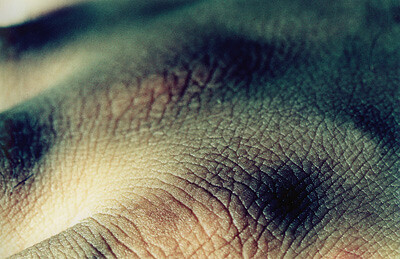

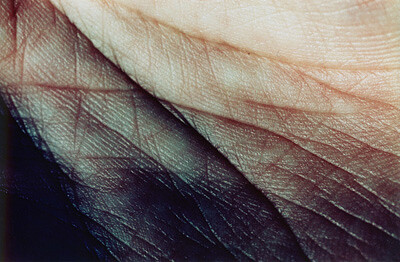

Dear W, We don’t have maps, we just go for walks. I would appreciate if you refrain from contacting me or other group members about your so-called research.
M.B (Director of the HHH)
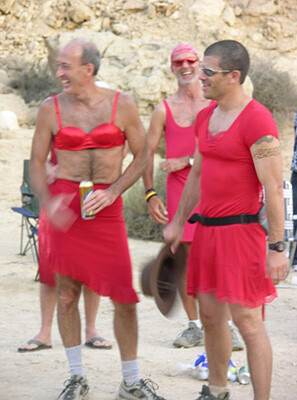

The previous four items of correspondences between W and the HHH are transcriptions of e-mails entered in the Cairo Psychogeographical Society’s blog at approximately 1:23 p.m. on Thursday, October 12, 2007.
The blog then went offline at approximately 3:30 p.m.


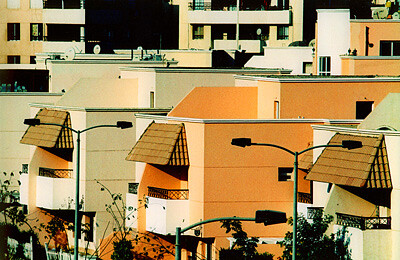

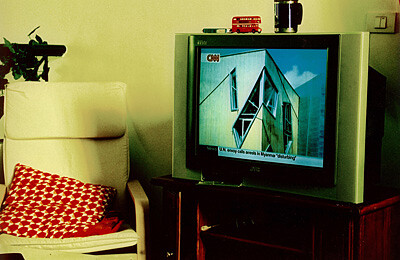

fatigue, marked weight loss, flu-like symptoms, muscle pain, joint pain, intermittent low-grade fevers, itching, sleep disturbances, abdominal pain, changes of appetite, nausea, diarrhea, dyspepsia, cognitive changes, depression, headaches, mood swings


Skateboarders form another group addressing physical geography. Skateboarding produces space, but also time and the self. Paths are molded by the contours in the ground, space is redefined, reused, and subverted. Cairo is a newcomer to the parade of skater fashion. It seems naive to propose that skating as a lifestyle is resistant to the capitalist economy of production and consumption.
What W seems to like about skaters is the fact that they are kind of brave. They exert themselves upon the surrounding environment without fear or guilt. They are also decentralized — not particularly serious, but totally aware and sensitive to the space around them.
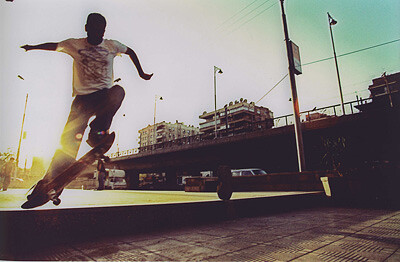

Trails of different angles and contours can be traced from the marks left by the boards. Each line is a record of an action — an action involving a movement within different spatial vectors. Intensity, friction, impact, and momentum can all be felt on the wooden pages of history.
In spite of how the skater lifestyle has been commodified, can it be argued that skaters use space, yet give nothing back?


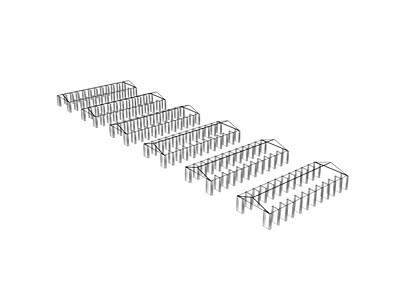

This is a 3-D model of Oboor market for wholesale produce, or “the stomach of Cairo.” I prefer to call it the “mouth of Cairo,” since it is the primary location receiving agricultural produce from farms and distributors around the Nile Delta. It is the nutrition funnel through which the whole city is fed.
The market was moved from Rod el Farag some fifteen years ago in the mid to late nineties. The market itself has been organized in rows of storehouses that are divided into small shop rooms, which are owned by the same traders that would have otherwise been in Rod el Farag, and others as well.


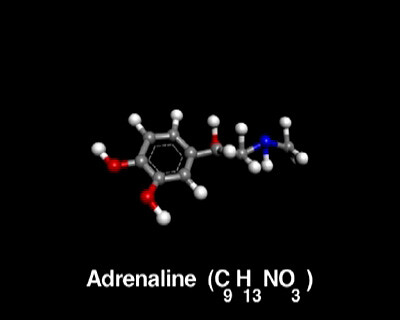

The adrenaline hormone is released into the bloodstream in situations of stress or fear. When it reaches the liver, the hormone raises blood sugar levels. It also increases the heart rate, increases blood flow to the muscles, reduces blood flow to the skin, widens breathing tubes, and dilates the pupils of the eyes.
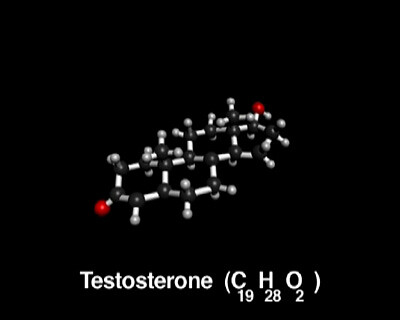

The testosterone steroid hormone is primarily secreted in the testes of males. Testosterone is the principle male sex hormone and an anabolic steroid. Testosterone plays key roles in health and well-being. Examples include: retention of muscle mass and strength, libido, penile-erection frequency, and mental and physical energy.


There’s a new member on W’s message board. The alias is “Flanaé,” resembling a French word meaning “to walk around dizzy without direction almost in a childish excitement.”
Dear W,
Did u notice the map of garden city? If you take a turn, you end up in the same place. It’s designed as an art deco pattern. perhaps to keep people in or to protect expats and keep them near the british embassy at that time. From the top, the planning is completely form over function. Can me and you wander it together?
yours, Flanaé


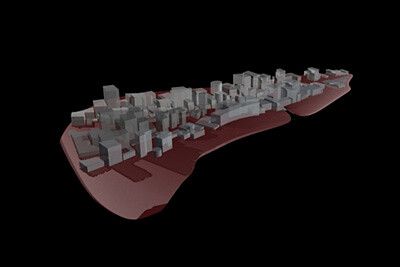

W feels his liver growing. Not only that, but he discovers that it is shaped like the island of Zamalek, the left lobe being Gezira, the Opera, and the Cairo Tower, and the right being residential Zamalek.


“picture this; I woke up, realized I’m late, then I rushed to work, i found the office shut…it’s Friday. You know… It’s the first time in ages that I leave the house on a Friday. The second I entered the park i felt happy, as if I’m dreaming…I’m not going home….”
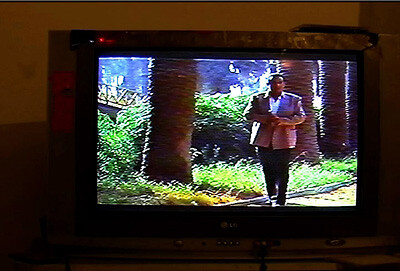

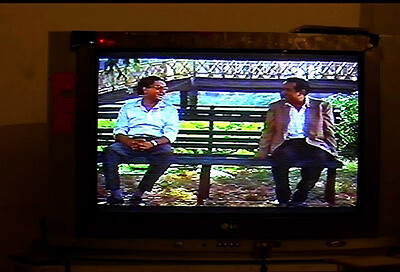



The Cairo Psychogeographical Society’s blog disappeared again on Friday October 13, 2007. The last entry was a set of pictures illustrating the last action to date. The action involved a wander around Zamalek using a certain order of direction. Two right turns and a left turn, and so on. If a dead end or obstruction was encountered, then the opposite code of direction was employed (two lefts, then a right). The action is considered complete when all possibilities are exhausted. One photograph of either a perspectival view of the street or a visual detail is taken at every point.
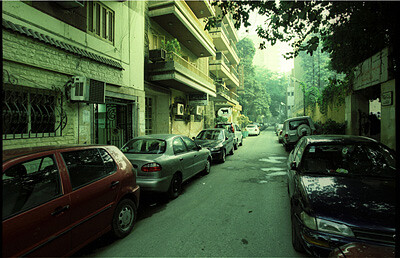



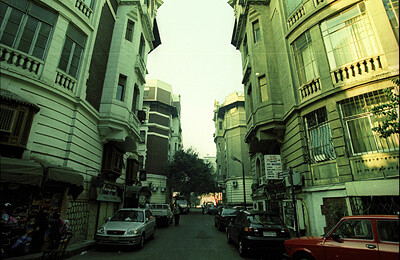

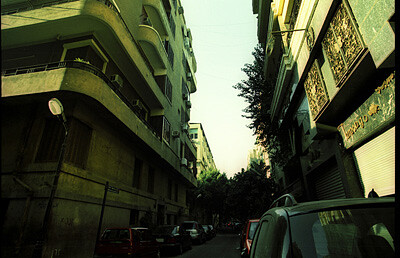

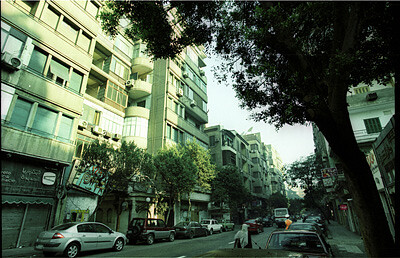

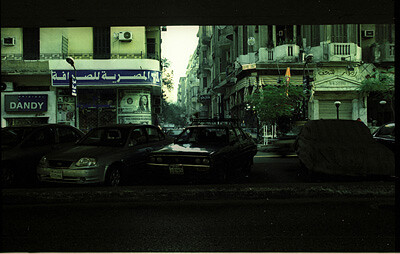

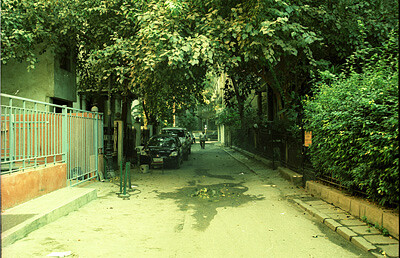

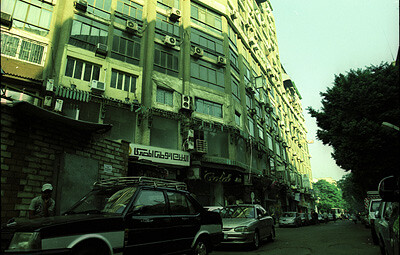

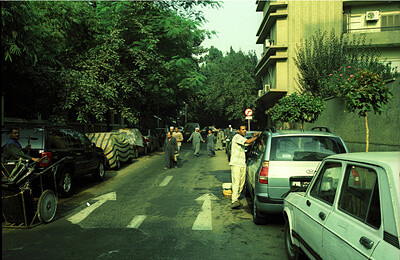



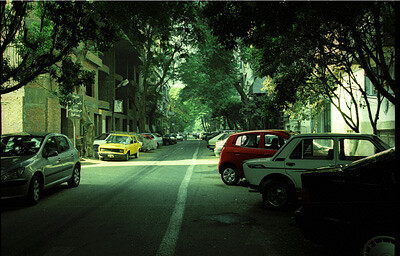

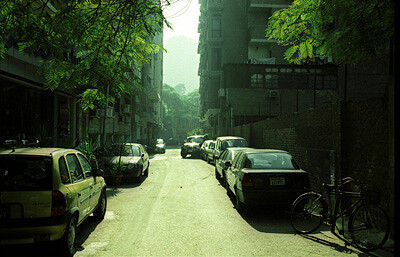

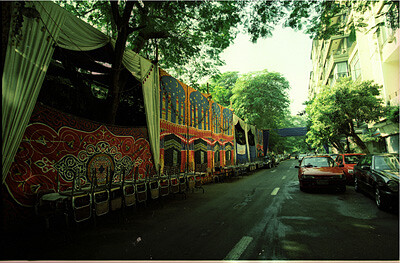

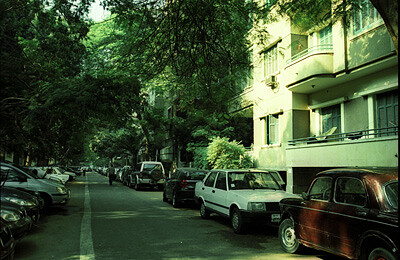

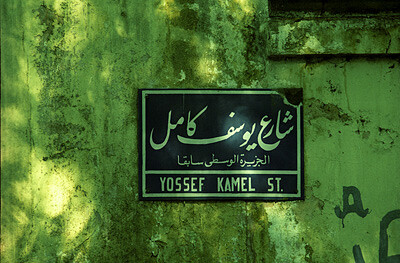



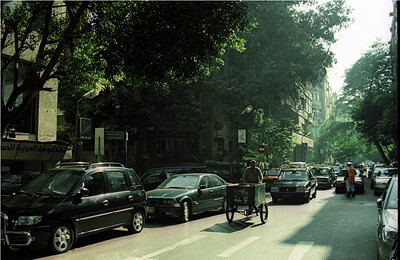

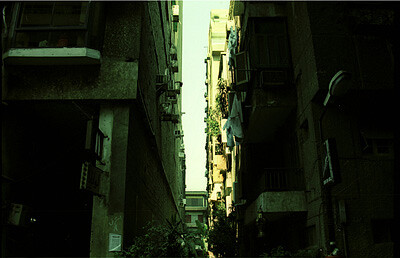





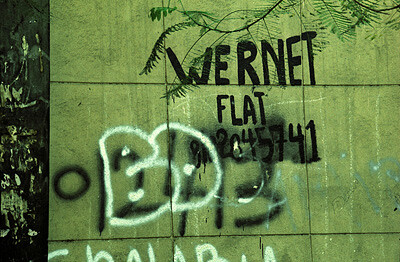

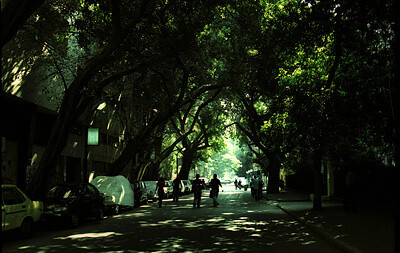

☁
Images by Nermine El Ansari